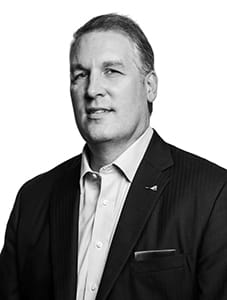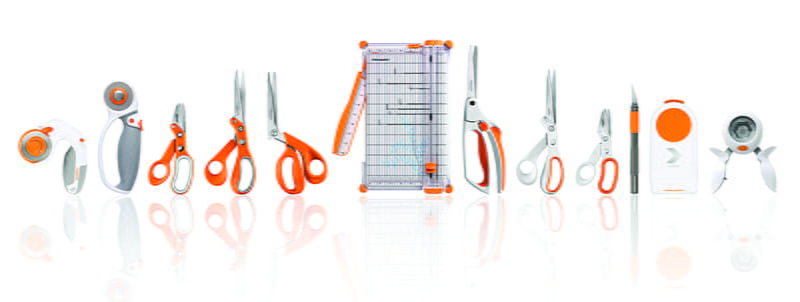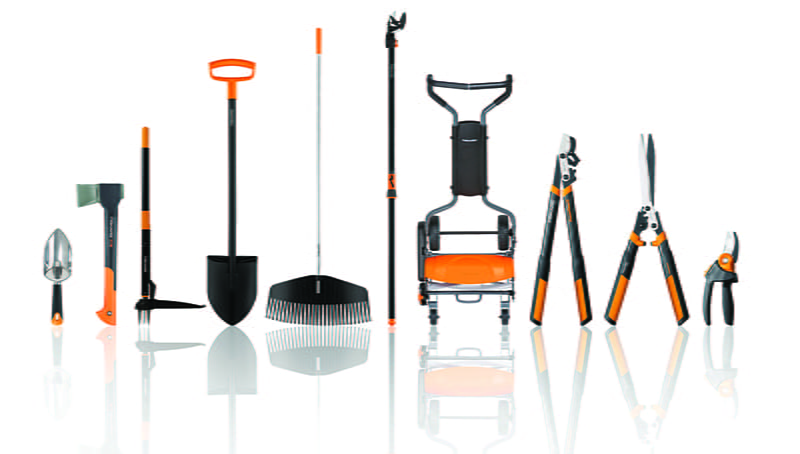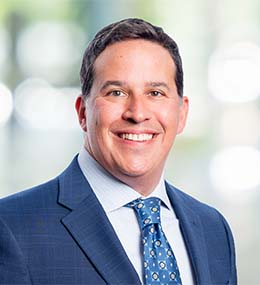Fiskars: At the Cutting Edge of Innovation
Fiskars: At the Cutting Edge of Innovation
Paul Tonnesen, Global Functional President at Fiskars, discusses the company’s global strategy, iconic consumer brands, and annual appearance at the Final Four.
 Founded in 1649 in Finland, Fiskars has grown into a leading consumer
goods company serving consumers and customers around the world
with a dynamic portfolio of globally recognized brands, including
Fiskars, Gerber, Iittala, Royal Copenhagen, Waterford, and Wedgwood.
Best known for its iconic, orange-handled scissors (more than 1 billion
sold), Fiskars continues to build on a mission to create a family of
lifestyle brands that create a positive, lasting impact on their customers’
quality of life.
Founded in 1649 in Finland, Fiskars has grown into a leading consumer
goods company serving consumers and customers around the world
with a dynamic portfolio of globally recognized brands, including
Fiskars, Gerber, Iittala, Royal Copenhagen, Waterford, and Wedgwood.
Best known for its iconic, orange-handled scissors (more than 1 billion
sold), Fiskars continues to build on a mission to create a family of
lifestyle brands that create a positive, lasting impact on their customers’
quality of life.
Paul Tonnesen joined Fiskars as President of the Americas in 2006, and has recently transitioned into the role of Global Functional President. As the highest-ranking executive in North America, Tonnesen plays a key role in executing the organization’s strategic priorities. Stout has served as a strategic partner to Fiskars over the years, and The Journal recently caught up with Tonnesen to discuss what exciting opportunities lie ahead for the company.
The Journal: What attracted you to Fiskars when you joined the organization back in 2006? What did you see as the biggest opportunity for the company then and what do you feel is the most exciting opportunity today?
Paul Tonnesen: When I first joined Fiskars, I was attracted to the strong heritage, and the brand. Being a company that started in 1649, but yet has endured over the generations was something I wanted to be a part of. I have always been attracted to challenging situations that had great products, but perhaps need some diversity of thought, along with strong processes. Fiskars Americas was just that in 2006. Strong product design and functionality, yet a need for new ideas, and strong way of working. The most exciting opportunity today is my team’s ability to penetrate new activities/ categories with products that overdeliver on functionality, design, and quality. A couple of examples this year is with our newly designed Gilmour watering products and our introduction of Hardware striking and metal-cutting tools.
The Journal: Tell us about the scissors. What is it like to work for a company that sells a universally recognized product that has reached icon status around the world? How does this brand equity impact the other brands in your portfolio?
Tonnesen: The iconic orange-handled scissors were launched in 1967 and will be celebrating their 50th anniversary this October. It is an amazing story of innovation and timeless design. Scissors had been all-metal for roughly 2,000 years when a Fiskars designer created a prototype that lightened the scissors by using a modern ergonomically designed handle and made it considerably more user-friendly. This innovation has been so iconic and recognizable that Fiskars has been granted a trademark for orange-handled scissors in the United States, Canada, and Finland.
The Journal: You were recently promoted from President of the Americas to Global Functional President. What does this shift represent?
Tonnesen: A lot more international travel, ha! Seriously though, it is an opportunity to share best practices across areas of the world. We have pockets of expertise that for one reason or another has been locked into one particular strategic business unit. My job is to unlock these great ideas (and people), share them across the globe, and capitalize on global collaboration.
The Journal: What is your brand portfolio strategy?
Tonnesen: Our mission is to build a family of iconic lifestyle brands. We will continue to grow by increasing the value of our brands and expanding our brand portfolio with highly desired consumer brands.
The Journal: With so many robust brands in your portfolio, how is the company organized, and what distinct segments do you serve?
Tonnesen: Fiskars is divided into two global strategic business units: Living and Functional. I lead the Functional organization, which includes innovative everyday products designed for consumer enthusiasts. I am responsible for the Fiskars and Gerber global brands along with many regional brands.
The Journal: How would you describe your target consumer and the unique value they derive from your products?
Tonnesen: In each consumer activity or segment, our target market is an “Enthusiast.” [Consumers in this market] passionately pursue these activities, as evidenced by their spending above-average time and money in the segment. Our goal is to empower their achievement and self-expression. Our products make the tasks easier through smart design. We also share their passion and provide advice, content, and social outlets to share their pursuits with other likeminded people.
The Journal: Fiskars has been described as one of the most unique partners of the National Collegiate Athletic Association (NCAA), now in its eighth year of being the Official Net- Cutting Scissors during the NCAA Basketball Championship. How did this brilliant idea come about, and should we look for you on television at the Final Four?

Tonnesen: One of our associates was watching the Final Four net-cutting ceremony. The team was using a very average pair of our competitor’s scissors and could not cut through the net. We contacted the NCAA and sent them scissors for the next year’s ceremony. The scissors worked flawlessly and our partnership has been strong ever since. It is a great example of how our tools help others effortlessly enjoy what they are doing. In this case, the ceremony became an enjoyable experience for the athletes. It is also a lot of fun for our employees seeing their scissors being held high every year!
The Journal: How do you balance organic growth with identification of strategic acquisitions to help broaden your brand and product portfolio?
Tonnesen: We will always have organic growth through designing must-have consumer products. Organic growth, however, takes more nurturing and time. It also has a limited bandwidth (i.e., you can only grow organically as much as you have the internal resources).
Acquisition is more immediate, with resources that come with the deal. Some categories may be more of a “red-ocean” than others. Those categories are more heavily weighted toward acquisition in my mind. Both are important. It is critical we continue to grow our core business, while at the same we are continually looking for strategic acquisitions to complement our existing business and accelerate growth.
The Journal: The retail environment has seen its fair share of upheaval recently, with more change expected. What challenges and opportunities do players like Amazon offer to companies in the consumer packaged goods supply chain?
Tonnesen: The shift to online shopping has been taking place for years. Fiskars has embraced omni-channel initiatives and will be helping consumers access our helpful expertise and products wherever they choose to search. We think there is a seamless experience where physical and digital shopping can be harmonized. Fiskars is moving fast to innovate and lead in this area.

The Journal: A few years ago, Fiskars built a new Americas headquarters in Middleton, WI. As a major employer in the greater Madison area, tell us about what this investment represented and how it affected your relationship with the community.
Tonnesen: In many ways our new facility represents the results of our hard work and consistent growth over the years. This new space reflects our Finnish heritage and Midwest roots through beautiful design, architecture, and aesthetics. The physical spaces like smart workstations and collaboration areas allow for more team-building interactions. Plus, our research and development innovation center and consume rexperience labs have really helped us accelerate our consumer innovations. It is a really amazing place to work and was recognized as the best office building in Dane County for 2016. This obviously helps with retainment and recruitment in the Madison area.
The Journal: In 2012, you became involved with Boys & Girls Clubs of America (BGCA) and today serve as Vice Chairman and National Trustee of the Midwest Region. What drew you to lend your support and advocacy to this organization?
Tonnesen: I actually became involved stemming from a cold-call to my office from the local county club CEO. He asked if I would be able to stop by and see the club on my way home from my office. I was at a time in my life, like many others I am sure, that found myself wanting to “pay it forward” or give back to my community, but was too busy to stop and figure out how to make it a reality. Once at the club, I was able to make the connection with the kids and become better informed about how important the BGCA is to kids that need us the most.
As a numbers guy, it was easy to understand the impact. For instance, the BGCA serves more than 4 million kids in over 4,300 clubs around the U.S. and on every military base in the world. Only 83% of kids nationally expect to graduate high school, but yet 97% of club teen do. In addition, 84% of club teens abstain from alcohol compared with 58% nationally. Or how about this one, 68% of club teens volunteer in their communities versus 39% nationally. Over 11 million kids nationally are unsupervised after school between 3 p.m. and 6 p.m. We want to make sure they have an emotionally and physically safe place to go, a place that is fun and will give them the self-esteem and extra help they may need to graduate on time and go to college. But bottom line, I do it because it needs to be done, and it makes me feel good.
The Journal: What do you enjoy doing most in your free time?
Tonnesen: Spending time with my wife and three daughters, whether it be boating or traveling. I also enjoy golfing, playing basketball, being involved with my community, and various board work.
The Journal: If you could give advice to your younger self when you were starting out in business, what would it be?
Tonnesen: I actually do get the chance with our interns and various engagements with local universities each year to discuss some tips and life experiences I wish someone told me when I was younger. The biggest piece of advice revolves around creating separation or differentiation. There are approximately 1.9 million four-year college graduates each year, along with another 150,000 graduates obtaining MBAs. In all, about 400,000 business degrees are given. That means if you are graduating, you need to compete with about 400,000 other people for a job. How are you going to stand out?
I talk about not being average. Being good at teamwork versus just an individual contributor. This is a big adjustment for most college kids. Think about all the individual work you are required to do in school – how, in most cases, you are restricted to work in teams. Then you get in the real world, and it is all about working on teams. That is not an easy adjustment to make.
Also, networking is invaluable. Keep your contacts active.
The Journal: What was your first job?
Tonnesen: I was a paperboy in Upstate, NY. This job taught me accountability – you had to get the customers’ papers to their homes, exactly the way they wanted it, under the mat, behind the glass door, etc. It also forced me to talk to people. Each month you had to collect the money the people owed. That meant knocking on each door, asking for the money, and conversing with different people. Finally, it taught me to move fast – whether just wanting to be done with the job, or running away from vicious dogs!




